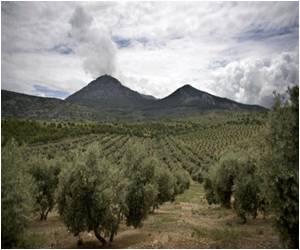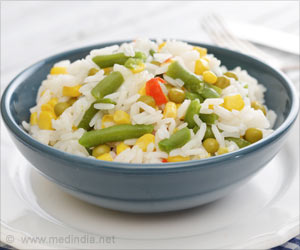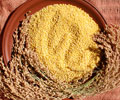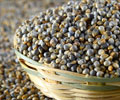Highlights:
- Replacing rice with alternative crops like maize, finger millet, pearl millet, or sorghum could reduce irrigation water demand by 33 percent
- Alternative crops also improve production of iron by 27 percent and zinc by 13 percent
- 2018 can rightfully be called the “Year of the Millets”
What’s the Current (Agricultural) Situation of India?
The Green Revolution that started in India in the 1960s aimed at reducing hunger throughout India by making the country self-sufficient and self-reliable. However, it is not a viable solution anymore due to the toll it has taken on the environment like increased demands on the water supply, greenhouse gas emissions, and pollution from fertilizer. Many regions are already chronically water-stressed, and, to make matters worse, monsoons are delivering less rainfall than they used to.With its growing population, India will need to feed approximately 394 million more people by 2050.
Around 30 percent or more people in India are anemic and also have other significant nutrient deficiencies.
"If we continue to go the route of rice and wheat, with unsustainable resource use and increasing climate variability, its unclear how long we could keep that practice up," says Kyle Davis, a fellow at Columbia University's Earth Institute and lead author on the new study. "That's why we're thinking of ways to better align food security and environmental goals."
Study Results
In their study, Davis and his colleagues addressed two key objectives of the Indian government- To reduce undernourishment and improve nutrition
- To promote sustainable water use
- Rice takes up most water when it comes to producing nutrients
- Wheat has been instrumental in causing maximum irrigation stresses
- Overall, irrigation water demand can be reduced by 33 percent if we replace rice with alternative crops like maize, finger millet, pearl millet, or sorghum
- Production of iron and zinc are improved by 27 percent and 13 percent respectively
Replacement of rice should be evaluated on a case-by-case basis for each district, Davis said.
Findings are promising but to start making policy recommendations, the research team would have to add other variables into the analysis, like greenhouse gas emissions, climate sensitivity, and the labor and money involved to grow each crop.
Are Indians Willing to Incorporate Alternative Cereals into their Diet?
The answer seems to be in the affirmative.- Alternative crops still continue to be consumed in pretty large amounts in many places around India.
- India's state-run Public Distribution System (PDS) currently gives incentives to smallholder farmers and low-income households to plant and buy rice and wheat, but future policies could influence consumer preferences and help to encourage the use of the more nutritious, water-saving cereals like millet and sorghum.
- Some Indian states have already started pilot programs to grow more of these crops.
References:
- Kyle Frankel Davis, Davide Danilo Chiarelli, Maria Cristina Rulli, Ashwini Chhatre, Brian Richter, Deepti Singh, Ruth DeFries. Alternative cereals can improve water use and nutrient supply in India. Science Advances, 2018
- Green Revolution in India - (https://en.wikipedia.org/wiki/Green_Revolution_in_India)
Source-Medindia
















